Zamioculcas Raven Black ZZ Emerald Palm
The Zamioculcas Raven Black, also known as the Black ZZ Emerald Palm, is a striking addition to any home or office. This low-maintenance beauty is perfect for beginners, thriving in low-light conditions with minimal effort. Its glossy, deep black leaves are a bold contrast to lighter interiors, making it a stylish and practical choice for any plant lover.
This low-light houseplant is incredibly resilient, capable of tolerating irregular watering and neglect while still looking stunning. It’s ideal for those new to plant care or anyone seeking a dramatic, statement plant that requires little upkeep.
This low-light houseplant is incredibly resilient, capable of tolerating irregular watering and neglect while still looking stunning. It’s ideal for those new to plant care or anyone seeking a dramatic, statement plant that requires little upkeep.
Zamioculcas Raven Black ZZ Emerald Palm Key Features:
- Thrives in low light: Perfect for shaded corners or dimly lit rooms.
- Beginner-friendly: Easy to care for and forgiving of occasional lapses in care.
- Air-purifying: Helps improve indoor air quality by filtering toxins.
Zamioculcas Raven Black ZZ Emerald Palm Care Tips:
- Place in indirect or low light; avoid direct sunlight to prevent leaf damage.
- Water when the soil is completely dry to avoid overwatering.
- Use well-draining potting mix; a quality option is available on our website.
Note: The planters may appear slightly deformed due to the robust root system of the plant. However, this does not affect the plant’s health or growth and is completely normal for Zamioculcas plants.
Add the Zamioculcas Raven Black to your collection today and enjoy the perfect low-light houseplant for beginners!
- How often should I water my Zamioculcas Raven Black?
- Water the plant only when the soil has completely dried out. Typically, this means watering every 2-3 weeks, but adjust based on humidity and temperature in your home.
- Can the Zamioculcas Raven Black ZZ Emerald Palm be placed in a room with no natural light?
- While it thrives in low light, it still requires some indirect light to grow. It’s best suited for rooms with dimly lit conditions rather than completely dark environments.
- Is the Zamioculcas Raven Black suitable for offices?
- Yes, its low light requirement and air-purifying properties make it an ideal plant for office settings, especially in spaces away from direct sunlight.
☀️ Light
☀️☀️▫️ (Medium)
The Zamioculcas Raven Black thrives in low to medium light conditions. It’s perfect for shaded corners or dimly lit rooms where other plants might struggle. Avoid placing it in direct sunlight, as this can cause the leaves to scorch.
💧 Water
💧▫️▫️ (Low)
This plant requires minimal watering. Wait until the soil is completely dry before watering again. Overwatering can harm the plant, so less is definitely more with the Zamioculcas Raven Black.
🌡️ Temperature
🌡️🌡️▫️ (Average)
The Zamioculcas Raven Black prefers average room temperatures between 18°C and 24°C. It can tolerate a range but keep it away from cold draughts and direct heat sources like radiators.
💧 Humidity
💧▫️▫️ (Low)
This ZZ plant isn’t fussy about humidity levels and does well in typical home environments. No need for misting—this is a truly low-maintenance gem!
🌱 Repotting
Repot your Zamioculcas Raven Black every 18-24 months or if you notice the pot distorting from a robust root system. Use a well-draining potting mix to ensure the health of your plant.
🐾 Pet Friendliness
Caution is advised as the Zamioculcas Raven Black is toxic if ingested. Keep it out of reach of curious pets and small children.
🏠 Recommended locations at home
This plant’s striking appearance and low light adaptability make it perfect for offices, living rooms, or any space that could use a touch of dramatic flair without needing constant sunlight.
🍃 Air Purifying
The Zamioculcas Raven Black helps improve indoor air quality by filtering out toxins, making it not only a stylish choice but a healthy one too!
✨ Other Plant Features
Known for its durability and ease of care, the Zamioculcas Raven Black is especially suited to beginners or those who travel frequently. Its slow growth rate also means you won’t need to worry about it outgrowing its space anytime soon.
If you have any more questions, don’t hesitate to ask Mossbot for assistance or contact us via our website. Remember, we also offer a free plant hospital service if your plant needs extra care!
The Ultimate Care Guide for ZZ Plants: Raven, Zenzi, and More
Introduction and History The ZZ plant (Zamioculcas zamiifolia) is a beloved houseplant known for its resilience and striking appearance. Native to Eastern Africa, specifically Kenya and Tanzania, it thrives in a range of conditions and has been cultivated as a decorative plant worldwide. The ZZ plant was first officially described by Heinrich Gustav Adolf Engler, a German botanist, in 1905. Its rise to popularity, however, came much later, particularly in the late 20th century, when its hardy nature made it a staple in homes and offices.
Description and Features: ZZ plants are characterised by their waxy, glossy leaves, which grow on thick, fleshy stems. These stems act as water reservoirs, enabling the plant to survive long periods without watering. There are several varieties, including:
- Zamioculcas Raven Black: Features deep, almost black foliage, making it a striking choice for modern interiors.
- Zamioculcas Zenzi: A dwarf variety with compact growth and curled leaves.
- Standard ZZ Plant: Boasts vibrant green leaves that brighten any space.
Key Features
- Pet-friendliness: ZZ plants are not pet-friendly; all parts of the plant are toxic if ingested by pets or humans.
- Low-light resistance: Ideal for dim corners but can tolerate a wide range of light conditions.
- Water efficiency: Thrives on infrequent watering thanks to its rhizomatous roots.
- Growth rate: Slow-growing but long-lived, making it a low-maintenance companion.
- Perfect for beginners: Almost indestructible and easy to care for.
Care Instructions
1. Watering
- How much water does a ZZ plant need? Water the ZZ plant only when the soil is completely dry. Overwatering is the most common issue for ZZ plants.
- Signs of overwatering: Yellowing leaves, mushy stems, and root rot.
- What to do if you overwater your ZZ plant: Allow the soil to dry out completely before the next watering. If the roots are mushy, consider repotting the plant and trimming away any rot.
- Underwatering signs: Wrinkled leaves and drooping stems. Give the plant a thorough soak, ensuring excess water drains away.
- Can ZZ plants go without water? Yes, they can survive weeks without watering due to their water-storing rhizomes.
2. Light Requirements
ZZ plants prefer indirect, bright light but can tolerate low-light conditions, making them perfect for offices or dimly lit rooms. Avoid direct sunlight, as it can scorch the leaves. If you’re wondering, can ZZ plants survive in no light? They can endure extremely low light but will grow slowly and may lose their vibrant colour.
3. Humidity and Temperature
- Humidity: ZZ plants thrive in average household humidity levels but adapt well to drier environments.
- Temperature: Keep between 15-26°C. Avoid placing the plant near cold drafts or heating vents.
- Can ZZ plants survive cold? They do not tolerate temperatures below 10°C and may develop damage or die.
4. Plant Food
Feed your ZZ plant with a balanced houseplant fertiliser during the growing season (spring and summer). Use once a month and reduce feeding during autumn and winter. If you’re searching how to fertilise ZZ plants, choose a low-strength liquid fertiliser for best results.
5. Pruning
Prune to remove yellowing or damaged leaves. Use clean, sharp scissors to prevent infection. Pruning also helps maintain the plant’s shape and encourages healthy growth. If you’re asking, how to prune a ZZ plant, focus on cutting near the base of the stem for a clean look.
Common Issues and Troubleshooting
1. Yellow Leaves
- Cause: Overwatering or insufficient light.
- Solution:
- Check the soil for moisture; if it’s soggy, allow it to dry completely before watering again.
- Move the plant to a location with brighter, indirect light.
- Trim any completely yellowed leaves to direct energy to healthy growth.
2. Drooping Stems
- Cause: Underwatering or poor drainage.
- Solution: Ensure the soil is well-draining and water thoroughly when dry. Repot with fresh soil if necessary. If you’re wondering why are my ZZ plant stems drooping, check both watering and pot size.
3. Brown Tips
- Cause: Low humidity or over-fertilising.
- Solution: Mist occasionally to increase humidity and follow a proper feeding schedule. Reduce the frequency of fertiliser application if tips continue to brown.
4. New Leaves with Different Colour
- Cause: Natural growth process.
- Solution: Young leaves often appear lighter or have a different hue when emerging. They will darken to match mature foliage as they age.
5. Root Rot
- Cause: Prolonged overwatering.
- Solution: Remove the plant from its pot and inspect the roots. Trim away any mushy or discoloured roots. Repot in fresh, well-draining soil and reduce watering frequency.
6. Slow or Stunted Growth
- Cause: Insufficient light or nutrients.
- Solution: Move the plant to a brighter location (but avoid direct sunlight) and consider feeding with a balanced houseplant fertiliser during the growing season. If you’re searching how to make ZZ plants grow faster, light and feeding are key.
Propagation Methods
1. Leaf Cuttings
- Take a healthy leaf and insert it into moist sphagnum moss or well-draining soil.
- Keep the cutting in a warm, bright location and mist occasionally.
- Roots will develop in a few weeks, followed by new growth. If you’re searching how to propagate a ZZ plant from leaves, this method is simple and effective.
2. Division
- Remove the plant from its pot and gently separate the rhizomes. Ensure each section has roots and at least one stem.
- Replant in fresh soil and water lightly.
3. Water Propagation
- Cut a healthy stem and place it in water using a propagation tube.
- Change the water weekly to prevent stagnation.
- Once roots form, transfer to soil. For those searching can ZZ plants grow in water, this method works temporarily but they thrive better in soil.
Sphagnum moss and stunning propagation stations to propagate ZZ plants are available in our shop Highland Moss to make propagation easy and successful.
Is a ZZ Plant Right for You? ZZ plants are excellent for:
- Beginners: Minimal care requirements make them perfect for plant novices.
- Offices & Commercial Spaces: Thrive in low-light conditions and add a touch of greenery.
- Gifts: Their durability and stylish appearance make them a thoughtful present.
With the right care, your ZZ plant will thrive for years to come, adding elegance and greenery to any space. Whether you’re asking how to care for a Raven ZZ plant or exploring the best ways to propagate your Zenzi, this guide has you covered. Remember, all plants purchased from Highland Moss come with a scannable QR code for detailed care instructions and access to our Moss Bot for 24/7 plant care support.

Free Care Guide With Every Purchase
Scan the plant pot QR for instant access to our care guide for your plant. No hassle, no stress, just healthy and happy plants.
Verified reviews from our customers
| 5 star | 96% | |
| 4 star | 3% | |
| 3 star | 1% | |
| 2 star | 0% | |
| 1 star | 0% |



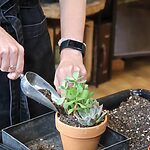
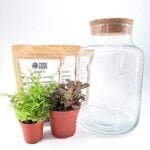
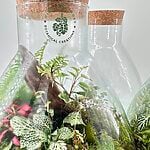
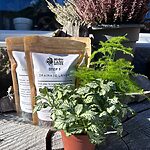

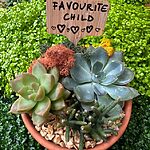
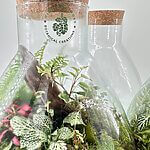


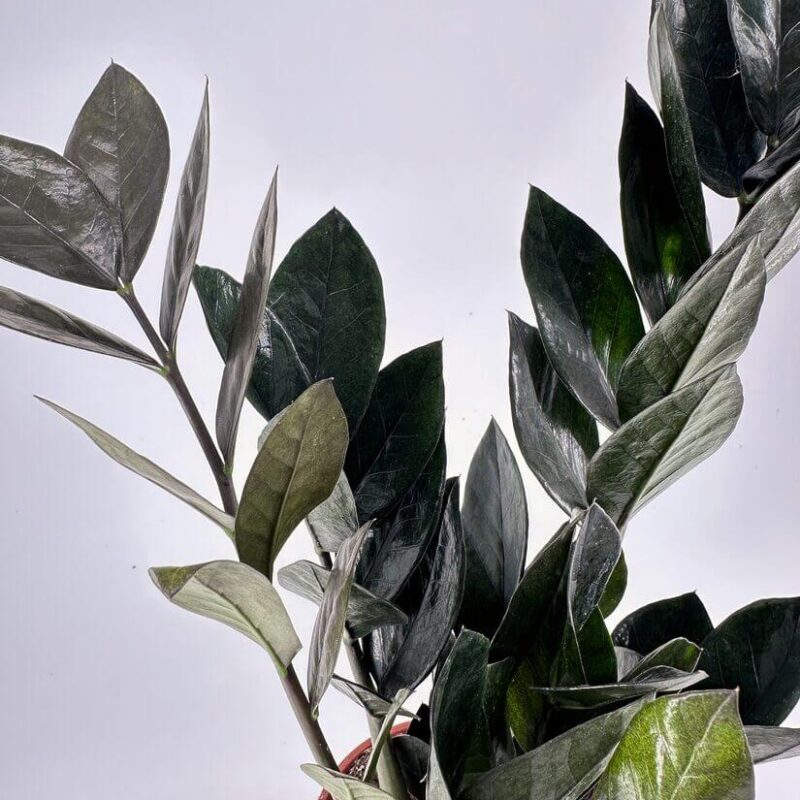
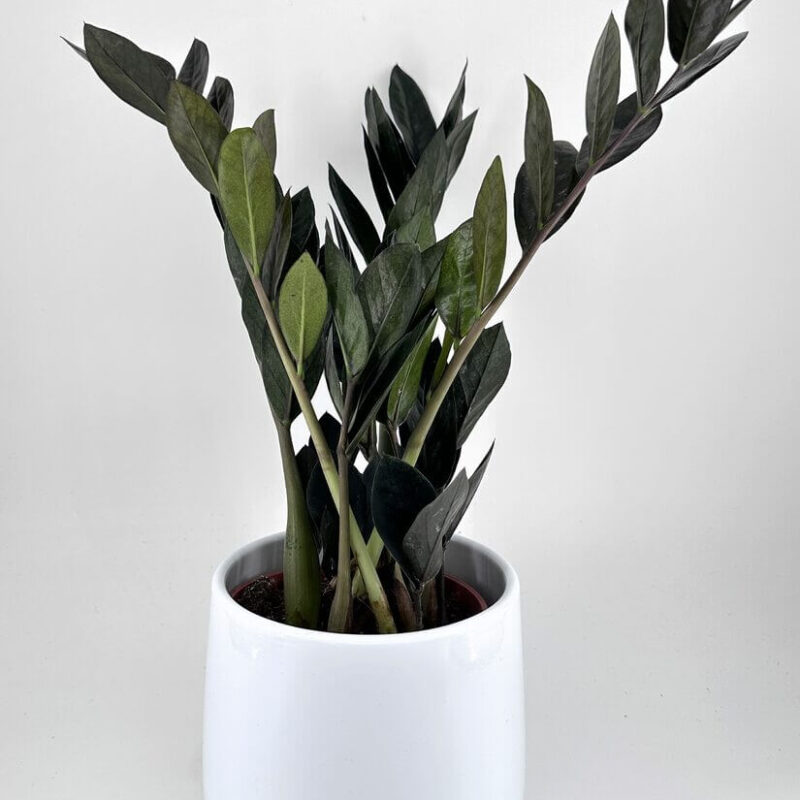





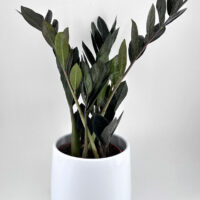
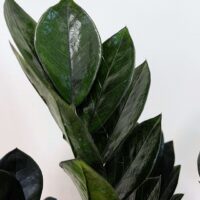

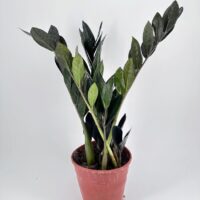
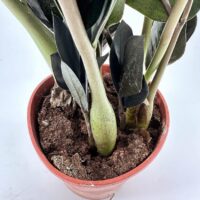
Very happy with the product and the service, thanks 😊
Thank you so much for holding back the delivery due to it clashing with the funeral of my dear mother in law, it was truly appreciated. My wife was also taken aback by your thoughtfulness by including a lovely bouquet of dried flowers and card with kind words. The flowers will always remind us of Elaine and sit pride of place on the sideboard in our dining room. You are truthfully some of the very best people we have dealt with, online and on the phone.
Amazing, personalised customer service! Always very friendly, approachable and dedicated. Thank you!